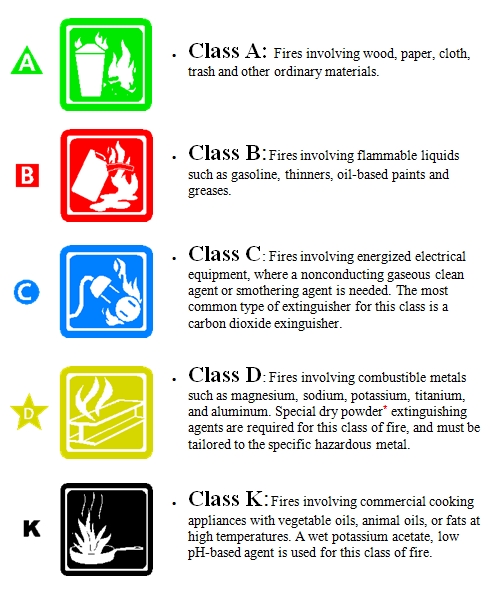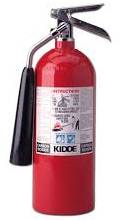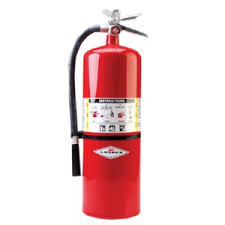Fire Extinguishers
Fire is a chemical reaction called combustion. Fire needs fuel, oxygen and heat in order to burn. Fire extinguishers apply an agent that will cool burning fuel or restrict or remove oxygen so the fire cannot continue to burn. Small fires can be quickly controlled by a portable fire extinguisher.
Fire extinguishers are located throughout every building on campus. To properly use an extinguisher, you must first be familiar with what type of fire each extinguisher is rated for, then know how it operates.
Fire Classifications

How To Use a Portable Fire Extinguisher
The easiest way to remember how to use a portable fire extinguisher is to use the acronym:
P.A.S.S
Pull:
Pull the safety pin.
Aim:
Aim the extinguisher nozzle at the base of the flames.
Squeeze:
Squeeze the trigger while holding the extinguisher upright.
Sweep:
Sweep the extinguisher from side to side, covering all areas of the fire with extinguishing agent.
Note: All fires will be reported. Even though a fire may appear to be extinguished, a Fire Marshal still needs to respond to verify it's out as well as accomplish a report.
Do You Know Which Extinguisher To Use?
 Carbon Dioxide (C02)
Carbon Dioxide (C02)
 Multi-Purpose Dry Chemical
Multi-Purpose Dry Chemical
Remember
- Always know the location of the nearest extinguisher, that it's in operable condition and how to use it.
- Before using the fire extinguisher, evacuate the building by pulling the fire alarm. Don't wait until the fire gets out of control.
- Only attempt using the extinguisher if the fire is small. If one extinguisher doesn't put out the fire, evacuate.
- While fighting the fire, don't allow your escape route to become blocked by fire.
- After an extinguisher is used, even just a little bit, you must contact the Fire Marshal's office to have it recharged.
